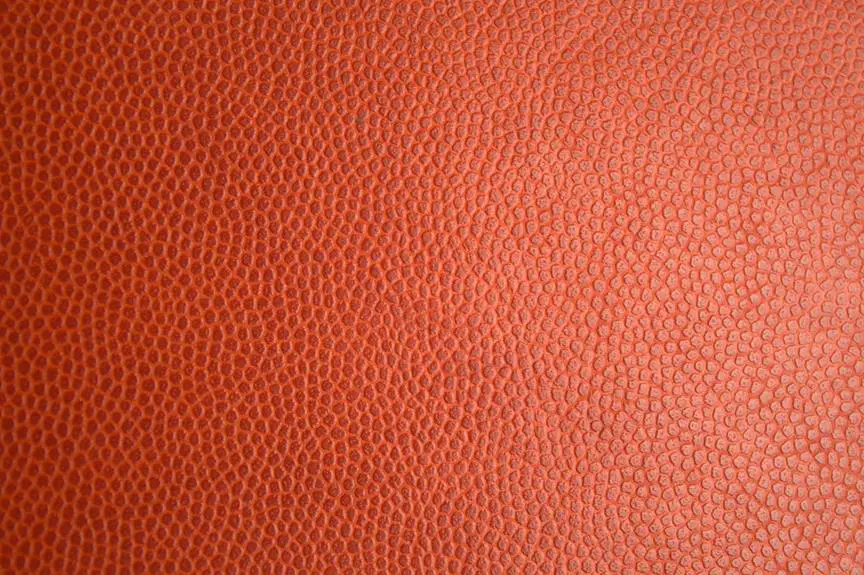Considering the durability and environmental impact of PVC and PU leather, you're likely weighing the pros and cons of each.
With a desire for mastery, it's important to understand the nuances of these materials. Both PVC and PU leather have their own set of advantages and drawbacks that can influence your decision.
In this comparison, we'll explore the key factors such as durability, environmental impact, cost-effectiveness, maintenance, and versatility to help you make an informed choice between PVC and PU leather for your specific needs.
Key Takeaways
- PU leather outperforms PVC leather in terms of durability and longevity.
- PU leather is more eco-friendly compared to PVC leather.
- PVC leather is often more budget-friendly compared to PU leather.
- PU leather closely resembles genuine leather in look and feel.
Durability and Longevity
When it comes to durability and longevity, PU leather outperforms PVC leather due to its resistance to wear and tear over time.
PU leather, also known as polyurethane leather, is made by applying a backing layer to a split leather base and then coating it with a layer of polyurethane. This process enhances its durability and makes it more resistant to scuffs, scratches, and fading compared to PVC leather.
On the other hand, PVC leather, or polyvinyl chloride leather, is made by adding plasticizers and stabilizers to PVC, which can make it less flexible and prone to cracking over time.
In a durability comparison, PU leather's ability to withstand daily use and maintain its appearance over the long term makes it a preferred choice for many consumers.
Its longevity assessment is also favorable, as it tends to retain its quality and aesthetic appeal for a longer period compared to PVC leather.
When considering which type of leather to invest in, PU leather's superior durability and longevity make it a compelling option for those seeking a high-quality and long-lasting material for their products.
Environmental Impact
Considering the environmental impact, PU leather, with its production process and biodegradability, emerges as a more eco-friendly option compared to PVC leather.
PU leather is typically made from a combination of split leather and polyurethane, which is derived from plant-based sources. This material sourcing contributes to lower environmental impact compared to PVC, which is derived from petroleum. Additionally, the manufacturing process of PU leather involves fewer harmful chemicals and toxins, making it a more sustainable choice.
When it comes to disposal and recyclability, PU leather stands out as the better option. Unlike PVC leather, which is non-biodegradable and can release harmful chemicals when incinerated, PU leather can degrade over time, reducing its environmental impact. Moreover, PU leather can be recycled to create new products, further minimizing its environmental footprint.
Cost-Effectiveness
For you, the cost-effectiveness of PVC and PU leather depends on your specific needs and budget. When comparing the two materials, it's essential to consider the balance between quality and price.
PVC leather is often the more budget-friendly option, making it an attractive choice for those looking to save money without compromising too much on quality. It offers a cost-effective solution for furniture, car interiors, and clothing, providing a leather-like appearance at a more affordable price point.
On the other hand, PU leather, while slightly more expensive, also presents a compelling cost-effective option. It offers a good balance between quality and price, making it a popular choice for those willing to invest a bit more for a product that closely resembles genuine leather.
Ultimately, your decision should be based on your specific budget and requirements. If you're looking for a more budget-friendly option, PVC leather may be the better choice for you. However, if you're willing to spend a bit more for a higher quality product, PU leather might be the more cost-effective option in the long run.
Maintenance and Care
To keep your PVC or PU leather looking its best, regularly wipe it down with a damp cloth and mild soap to remove dirt and stains. Proper maintenance and care are crucial for preserving the quality and longevity of your leather products. Here are some cleaning techniques and preservation methods to ensure your PVC or PU leather stays in top condition:
- Regular Cleaning Routine
- Wipe down the leather with a damp cloth and mild soap at least once a week to remove surface dirt and stains.
- Use a leather conditioner every few months to keep the material supple and prevent it from drying out.
- Preventive Measures
- Avoid exposing the leather to direct sunlight for extended periods to prevent fading and cracking.
- Keep sharp objects away from the leather to avoid scratches and cuts that can damage the material.
Following these cleaning and preservation tips won't only extend the life of your PVC or PU leather items but also ensure they maintain their aesthetic appeal. Proper care will help you enjoy your leather products for years to come.
Versatility and Aesthetics
Both PVC and PU leather offer a wide range of versatility and durability in their applications. PVC leather is known for its exceptional durability and can withstand harsh environmental conditions, making it a popular choice for outdoor furniture and automotive upholstery. On the other hand, PU leather is also highly versatile and durable, often used in clothing, upholstery, and accessories.
When it comes to aesthetics, PU leather is often favored for its more natural look and feel, closely resembling genuine leather. It offers a soft, supple texture that provides comfort without sacrificing style. In contrast, PVC leather tends to have a shinier and stiffer appearance, which may be preferred in certain modern or industrial design settings.
Ultimately, the choice between PVC and PU leather depends on the specific usage and desired aesthetic. Consider the intended application and the desired level of comfort and style to determine which material best suits your needs.
Frequently Asked Questions
What Are the Differences in the Manufacturing Process Between PVC and PU Leather?
When comparing the manufacturing process of PVC and PU leather, consider the environmental impact, cost, and durability. While PVC is cheaper to produce, it's less environmentally friendly than PU, which is more durable.
Are There Any Health Concerns Associated With PVC or PU Leather?
Health concerns associated with PVC and PU leather are minimal. PVC may contain harmful chemicals, and its production has a greater environmental impact. PU is generally safer, but still has some environmental drawbacks.
How Do PVC and PU Leather Compare in Terms of Breathability and Comfort?
When comparing PVC and PU leather, breathability is lower in PVC due to its non-porous nature, whereas PU leather allows for better air circulation, resulting in a higher comfort level. These differences impact overall comfort and breathability.
Can PVC or PU Leather Be Recycled or RePUrposed at the End of Its Lifespan?
At the end of its lifespan, both PVC and PU leather offer recycling options and repurposing opportunities. You can contribute to environmental sustainability by choosing to recycle or repurpose these materials instead of sending them to landfills.
Are There Any Specific Industries or Applications Where One Type of Leather Is Preferred Over the Other?
In certain industries, PVC vs PU leather preference varies. PVC is preferred for its durability and water resistance in outdoor applications, while PU is favored for its softer feel and breathability in fashion and upholstery.
- What Type of Fabric Is Chino? Understanding Chino Material - June 20, 2025
- What Is Silk Crepe De Chine Fabric? a Complete Guide - June 20, 2025
- What Is Crepe De Chine Silk Fabric? Features and Uses - June 20, 2025





